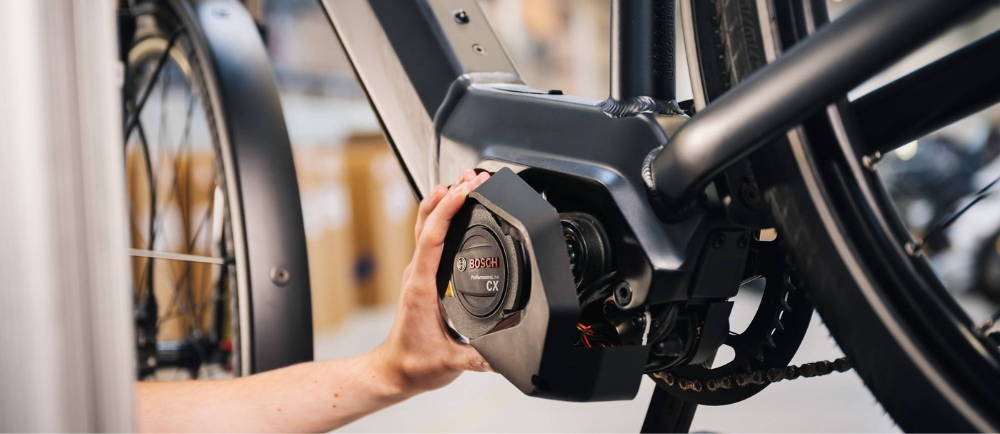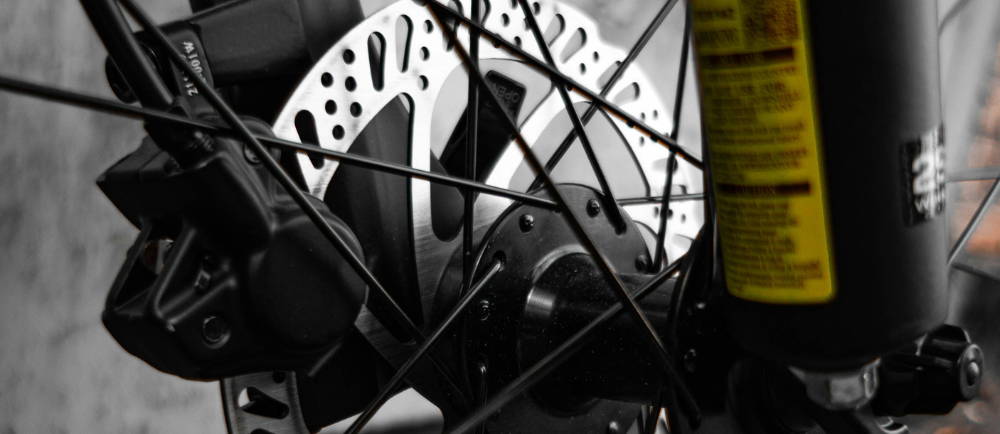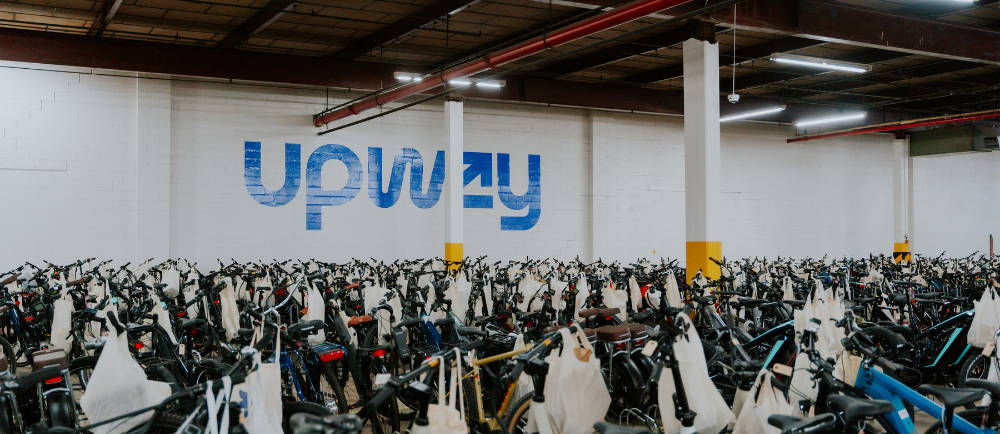New electric bikes from top brands can cost thousands of dollars, depending on their features and build kit options. New models can be a large investment but Upway sources like-new and used electric bikes from brands, bike shops, and individuals and professionally reconditions them, providing riders with amazing deals of up to 60% off compared to retail prices.
Difference Between Entry-Level and Expensive Electric Bikes
Written by: Rémy Rossi | June 6, 2025 | Time to read 7 min
What are you really getting from an expensive e-Bike that’s not provided by an entry-level model? I’ll discuss the difference and which tier of electric bike fits you best.

More about the Author: Remy Rossi
Rémy Rossi is a bike writer, mechanic, and educator who got his start in community-based bike shops and co-ops. With a decade in the industry, he still wrenches on bikes when he can and plays bike polo on a fixie.

Prioritizing value vs. performance

Entry-level e-Bikes can be an excellent value and are easy to use for recreational riders or first-time users. More expensive, premium e-Bikes focus on performance and have better-quality components for a more advanced, enjoyable ride. While entry-level electric bikes can be a solid value, they aren’t necessarily the very best value. More expensive bikes with longer-lasting parts or easier serviceability may actually save riders money over time.
In general, these are the price tiers of electric bikes:
- Entry-level e-Bikes: Under $1,500
- Mid-range e-Bikes: Between $1,500 - $4,000
- Premium e-Bikes: $4,000+
👋 Do you know Upway?
What is an entry-level electric bike?
What is a high-end electric bike?

There’s increased reliability and longevity of components, as well as the performance boost you’ll feel while riding. The fanciest electric bikes can cost well over $12,000 for blinged-out electric mountain bikes, but the high-end mark is more typically around $4,000-$6,000.
Entry-level vs. expensive e-Bikes

Battery
Battery safety is crucial and requires resources like rigorous testing, investment, and strict compliance with high safety standards. Many top-quality batteries are certified according to the UL 2849 safety standard, ensuring electrical and fire safety. For example, New York City mandates UL-certification for all electric bikes sold and ridden in the city.
Larger batteries with more watt-hours provide longer range but will cost more. Bikes that need the extra juice, like e-MTBs or cargo e-Bikes, often have these bigger batteries.
Bike electrical systems
Motor

Most entry-level e-Bikes have rear hub motors, perhaps unbranded or a proprietary design. These less expensive motors can still offer good performance, but add significant weight to the rear of the bike. Many premium e-Bikes— though not all— use mid-drive motors from the likes of Bosch, Shimano, or Yamaha. These advanced motors are ultra-reliable and offer smoother assistance.
Frame & build quality
You can notice the difference between less expensive and more premium e-Bikes just by looking at the frame. Expensive e-Bikes have cleaner welds, thinner tubing thanks to higher quality aluminum, or are made from carbon fiber. Tolerances are tighter, and the overall design is often sleeker. Expensive bikes like e-MTBs or cargo models require better frames for high-load riding.
Gearing
It seems like the Shimano Altus 7-speed drivetrain is featured on every entry-level e-Bike out there. This simple but reliable gearing does the job, but doesn’t offer as many gears or as precise shifting performance. More expensive e-Bikes have better gearing that’s built to the specs of the expected use, from 1x setups to wide cassettes and electronic shifting.
Brakes

There used to be a schism between e-Bikes with mechanical disc brakes or hydraulic disc brakes, but that’s nearing its end. Even most entry-level e-Bikes opt for the more powerful hydraulic disc brakes these days, though there is the occasional exception. In my book, hydraulic disc brakes are a must, given the extra weight and speed of electric bikes.
Suspension
Suspension can influence an e-Bike’s price significantly. Full suspension e-MTBs, for example, have a lot more expensive parts than rigid e-Bikes, and even hardtail e-Bikes have the addition of a front suspension fork.
Many entry-level e-Bikes have short-travel forks for added cushion, but the lower-quality parts add serious heft. More expensive bikes opt for fancier suspension specs built for performance and longer-travel scenarios. Road e-Bikes don’t have suspension, but can still be quite expensive.
Weight
Smart design and lighter components can shave weight from an electric bike, making it feel more like a standard bike and ride more efficiently. Weight matters for e-Bikes, but perhaps not in the ways you think. It’s true that lightweight e-MTBs and the slimmest models typically come at a premium. Entry-level bikes sacrifice weight savings for affordability.
Finishing kit & accessories
Of course, if you spend a pretty penny, you can expect shiny specs and fancy features on your e-Bike. Entry-level e-Bikes keep things basic and don’t overdo it on the accessories, while premium e-Bikes often have the latest and greatest tech and e-Bike accessories. Expect high-quality saddles, dropper posts, grips, fenders, wheel locks, better tires, and more.
Serviceability
Last but definitely not least, entry-level bikes and expensive models often differ in how easy it is to service them. Entry-level bikes may use proprietary parts that are difficult to source when issues arise— some bike shops won’t be able to help you. Expensive bikes are outfitted with parts from well-known brands with widely available parts and support.
Upway: Premium e-Bikes at accessible prices

What if I told you that you didn’t have to choose between entry-level and expensive electric bikes? Upway sells high-quality e-Bikes at prices up to 60% off, meaning you can get a premium model for less! Every electric bike is professionally reconditioned, inspected, and comes with a one-year warranty for complete peace of mind.
Frequently Asked Questions
Why are new e-Bikes so expensive?
How often should I maintain my bike?
We recommend checking that your tires are inflated before every ride, but other components can be inspected after every few rides. It’s also a good idea to complete a tune-up every riding season. Learn more in our other blog about how often e-Bikes need maintenance.
Are electric bikes safe?
Yes, e-Bikes are safe to ride, and they continue to get even safer due to better battery technology and safety certifications. Riders should keep in mind, however, the additional weight and higher speeds of electric bikes. Upway recommends against purchasing low-quality e-Bikes or used models that haven’t been inspected by a professional.
Key Takeaways
- Performance vs. Value: Entry-level e-Bikes offer affordability and simplicity, while expensive models deliver advanced performance, better parts, and durability.
- Component Quality Matters: Premium e-Bikes feature top-tier motors, batteries, and materials that enhance ride experience, safety, and longevity.
- Long-Term Costs: Though entry-level bikes cost less upfront, high-end e-Bikes may save money over time through reliability and easier servicing.


